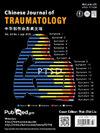院前损伤控制复苏决策应用程序构建及初步试运行。
IF 1.9
4区 医学
Q2 ORTHOPEDICS
引用次数: 0
摘要
目的:构建重症伤员院前损害控制复苏(PHDCR)决策应用程序,并对构建的应用程序的有效性和可用性进行初步的试验测试。首先通过深入的文献综述建立决策算法,然后通过3种文本切分算法,即基于词典的切分算法、基于标注的机器学习算法和基于理解的深度学习算法,在计算机上进行学习。采用B/S架构模式和Spring Boot作为构建app的框架。招募16名五年级医学生,采用基于动物模型的模拟PHDCR测试,对app的有效性和可用性进行测试。选取12头成年巴马小型猪进行腹部穿透性损伤,随机分配给16名学生,随机分为2组(每组n = 8): A组(自行决定PHDCR)和B组(通过app决定PHDCR)。要求学生在1小时内完成PHDCR,然后采血,进行血栓弹性成像、常规凝血试验、血细胞计数和血气分析。采用实验室检查结果及平均动脉压值比较两组复苏效果。在此基础上,对B组学生进行了基于4句话的李克特5分制后测问卷调查,对构建的app的可用性进行了测试。结果:以上述3种文本分割算法、B/S架构模式和Spring Boot为开发框架,成功构建了PHDCR决策app。B组判断PHDCR的时间为(28.8±3.41)秒,远短于A组(87.5±8.53)秒(p)。结论:本研究构建了PHDCR决策应用程序,初步试验表明该应用程序有助于提高穿透性腹腔损伤动物模型的复苏效果。本文章由计算机程序翻译,如有差异,请以英文原文为准。
Construction and preliminary trial test of a decision-making app for pre-hospital damage control resuscitation
Purpose
To construct a decision-making app for pre-hospital damage control resuscitation (PHDCR) for severely injured patients, and to make a preliminary trial test on the effectiveness and usability aspects of the constructed app.
Methods
Decision-making algorithms were first established by a thorough literature review, and were then used to be learned by computer with 3 kinds of text segmentation algorithms, i.e., dictionary-based segmentation, machine learning algorithms based on labeling, and deep learning algorithms based on understanding. B/S architecture mode and Spring Boot were used as a framework to construct the app. A total of 16 Grade-5 medical students were recruited to test the effectiveness and usability aspects of the app by using an animal model-based test on simulated PHDCR. Twelve adult Bama miniature pigs were subjected to penetrating abdominal injuries and were randomly assigned to the 16 students, who were randomly divided into 2 groups (n = 8 each): group A (decided on PHDCR by themselves) and group B (decided on PHDCR with the aid of the app). The students were asked to complete the PHDCR within 1 h, and then blood samples were taken and thromboelastography, routine coagulation test, blood cell count, and blood gas analysis were examined. The lab examination results along with the value of mean arterial pressure were used to compare the resuscitation effects between the 2 groups. Furthermore, a 4-statement-based post-test survey on a 5-point Likert scale was performed in group B students to test the usability aspects of the constructed app.
Results
With the above 3 kinds of text segmentation algorithm, B/S architecture mode, and Spring Boot as the development framework, the decision-making app for PHDCR was successfully constructed. The time to decide PHDCR was (28.8 ± 3.41) sec in group B, much shorter than that in group A (87.5 ± 8.53) sec (p < 0.001). The outcomes of animals treated by group B students were much better than that by group A students as indicated by higher mean arterial pressure, oxygen saturation and fibrinogen concentration and maximum amplitude, and lower R values in group B than those in group A. The post-test survey revealed that group B students gave a mean score of no less than 4 for all 4 statements.
Conclusion
A decision-making app for PHDCR was constructed in the present study and the preliminary trial test revealed that it could help to improve the resuscitation effect in animal models of penetrating abdominal injury.
求助全文
通过发布文献求助,成功后即可免费获取论文全文。
去求助
来源期刊

Chinese Journal of Traumatology
ORTHOPEDICS-
CiteScore
3.80
自引率
4.80%
发文量
1707
审稿时长
28 weeks
期刊介绍:
Chinese Journal of Traumatology (CJT, ISSN 1008-1275) was launched in 1998 and is a peer-reviewed English journal authorized by Chinese Association of Trauma, Chinese Medical Association. It is multidisciplinary and designed to provide the most current and relevant information for both the clinical and basic research in the field of traumatic medicine. CJT primarily publishes expert forums, original papers, case reports and so on. Topics cover trauma system and management, surgical procedures, acute care, rehabilitation, post-traumatic complications, translational medicine, traffic medicine and other related areas. The journal especially emphasizes clinical application, technique, surgical video, guideline, recommendations for more effective surgical approaches.
 求助内容:
求助内容: 应助结果提醒方式:
应助结果提醒方式:


